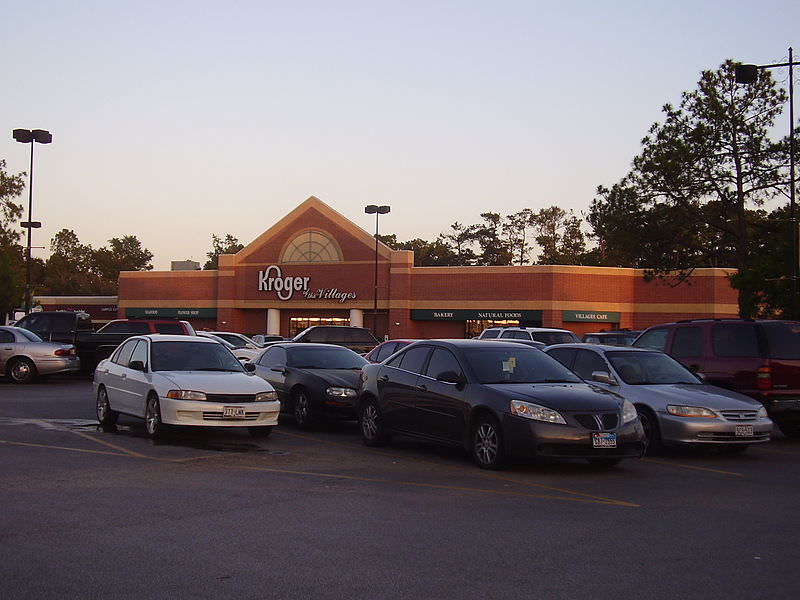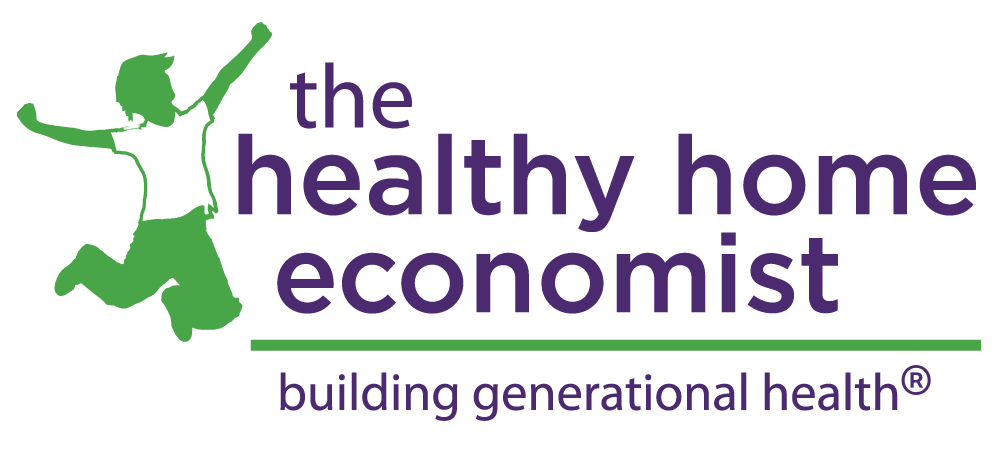
I am out of the kitchen and off to do some supermarket shopping in today’s video.
This should be fun!
How much do you buy at the enormous supermarkets where the vast majority of people buy most of their food today?
In this video, I will navigate you through the aisles of backside bulging processed foods to find the things that you can purchase that will enhance rather that harm your health.
I hope this video gets you thinking about where you can reduce your spending at the supermarket and better use that money elsewhere with small, local businesses and farms.
Healthy Supermarket Shopping (Is this even possible?)
More Information
My Asian Supermarket Adventure
Whole Foods: The Wal-Mart of Healthfood








It was worth it to learn about the butter. I have been buying organic butter for a few things, but have discovered Ghee for cooking and love that! I try to buy organic bananas simply because they seem to taste better. We have Trader Joes in CA and they sell raw cheese, organic free range eggs, more yellow than others, if our CSA runs out of pastured eggs and raw nuts. Otherwise, it’s freeing not to have the hassle of grocery shopping anymore. We get most our food including meat and raw milk from the CSA, ordered online and delivered each week to the church.
Great video!! In the winter I do buy produce since New England tends to run out, but in the summer I’m in there for things like soap and such. Cat food. Yes, I know, I should make them their food and not do the processed stuff, but I don’t have the time. (I do supplement their food but, no, I agree it is NOT the same.)
I also buy condiments there. However I am now (slowly) working on making my own, which will be a great help. Sometimes specialty ingredients; this takes time.
Great post! That’s about the same way we shop at a large grocery store 🙂 I also buy bananas, I get Kate’s Homemade Butter (from Maine, I am in Massachusetts), sometimes avocados, old fashioned oats, lemons, that’s about it. I actually do most of my shopping at Trader Joe’s, though it is still a grocery store, they do have some local produce and products (I stay away from their processed stuff). We’ve never gotten around to joining a local CSA – but with impeding threats of global food shortages, we just might do that because it looks like the prices at supermarkets will be going up up up!
Sarah, my husband will be glad that as we continue with the transition, I won’t be giving up Publix completely. I just have to get him to eat artichokes first. I understand a lot of people’s frustration. We want to get the best food, make the best choices, but it really is overwhelming at first. I had to decide we would make the transition over the span a few years. Every month I pick one thing to change for the better. I only have to research 1 thing that month. I only have to source 1 thing that month. I only have to fit 1 thing into my routine that month. Are things the best they could be right now? No. Are they better than if we found it all too hard and gave up completely (as I had done in the past)? Much, much better. Maybe in addition to the health store video you could do a post on steps, or baby steps, to make. Something like the pregnancy and baby post with the links to past articles would help a lot of real food newbies, and some of mid-transitioners, out.
Hi JNWG, here is a post I wrote about why I will never buy anything from Organic Valley again until they lift the moratorium on their member farms selling raw milk on the side:
https://www.thehealthyhomeeconomist.com/call-to-action-boycott-organic-valley/
Hi Sarah,
GREAT video! My question is, what do you think of those produce stands on the side of the road? There’s a big one about 45 minutes away from here and it’s always packed! I don’t think they sell organic produce, at least not the bulk of their produce anyway. Is this a better source than the supermarket?
Thanks.
Hi C, if the produce is local, it is better than organic from the store that isn’t local. Local produce even if conventionally produced is always the most nutritious as it is picked closer to ripeness.
Produce stands by the side of the road: Even if they are not declared organic, they may well be. Not going to swear they are, but the thing is, it is very expensive and hoop-jumping in the legal world to be “Organic” for a small farm locale. So, I stop and I buy, nine times out of ten.
Regular bananas are loaded with pesticides, herbicides. In fact, chemicals that are banned in this country are sold to other countries to put on the bananas so that we can buy the fruit back and eat the nasty stuff. I don’t even like touching bananas unless they are organic. I can’t imagine what the chems on the skins do as they flow into my body from even touching them.
Yes, I was confused about the statement that bananas are a no-spray crop as well. I looked on the internet and found no evidence that they have become no-spray.
I also don’t buy Dole or Chiquita bananas even if they are organic, since the United Fruit Company (the owner of all) have abused the human rights of their workers for decades. If you ever want to cure your appetite for bananas and pineapples, visit a plantation in person and witness how the people live and work in the environment. People should educate themselves not only on what the food is, but who has to suffer so that we can buy tropical fruits for mere pennies.
Thanks for all your great blogs and videos Sarah. I always learn so much from them. I was surprised to see you buying butter at Publix as I know you get it raw from a farm. Then I read the comments about not using your raw butter for cooking. We have been using only raw butter since we started getting it from the farm. I would like to understand better when to use the raw versus the store bought. I know I’ve seen you say you cook vegies in butter – was that raw or store bought? Any other examples would be greatly appreciated. Thanks!!! Beth
HI Beth, I usually cook veggies in Kerry Gold butter and then add raw butter after they are cooked. Double the fun!!! 🙂
Quick question: How long does raw butter last? I have a tub in the fridge that is at least 6 months old if not way more. Is it still safe to eat?
Hi,
Thank you for attempting to do a video in a huge chain grocery. I was wondering how you managed to get away with that…you have guts! I guess it’s easier to ask forgiveness than permission. 🙂
I would love more ideas on how to fill in the gaps (I don’t want to subsist on artichokes, butter, bananas, and tomatoes alone!) when you have small children and not much time. One day I’ll be able to drive all over creation and grind my own grain (if I ever figure out where to buy it). But for now, can we do the bulk of our shopping on the Internet? Is a CSA the way to go? Is it best to buy a juicer? If so, what kind? And do you only juice local in-season produce? (Looks like we’d be juicing butternut squash…haha.) What about dairy in a non-raw-milk state (like NC?)
I like the video…just trying to figure out the most healthy (but efficient) way to get the rest of our groceries!
Hi Jax, will figure out how to do this … will take some thought.
If you can join a CSA that is an awesome choice. It’s not possible for me since the deliveries are in the middle of the day. I chose Whole Foods/local market as the best that I can do. Trader Joe’s is another good choice. I buy some stuff on the internet: seeds, raw cacao, stevia, gluten free grains, cod liver oil, etc. Few items from my local farmers as I can get to the deliveries. Rest is from WF, big international market and a small local market.
In season vs not: again I do my best. I’ve been eating apples, pears and citrus fruit for months now and I rebelled yesterday. I bought some organic blueberries from Chile. Just couldn’t help myself LOL I try to stick to local in season veggies when at WF: they are cheaper anyway.
Juicer: I’d like to get one but for now I use my Blendtec blender for smoothies. I hear very good things about Jack Lalanne’s juicer. It’s not very expensive and lasts.
Here in GA it’s illegal to sell raw milk for people but you can sell for pets. So you do what you have to do. There is also an option to buy from SC and drive it to GA (completely legal).
From one mom to another (I have a 1 year old and a 6.5 year old): do the best you can. I used to beat myself up but eventually settled into a routine I’m happy with. I improve as I can when I can. Otherwise, I pick the best choice I can at the time.
Hi Sarah,
that was one great video. I live in Europe but have been to the States several times. And I have been to several supermarkets – the mere size of the supermarkets always overwhelms me. My eye-opening experience came to me several years ago when we were in one of those monsters trying to buy some stuff for a picnic. One of them was guacamole from the freshly prepared ready-to-eat section. Tomatoes was another and several other items that I can’t remember. They all looked very fresh and appetizing and we were all looking forward to sampling them. So we went to the seaside, (this was in Florida) found a nice place where to sit and started eating. NO TASTE. The stuff tasted like a mix of rubber and newspaper pulp. I was absolutely shocked because these things simply weren’t edible.
Hi Mezzo, that is why Americans eat so much and are by and large, so huge. They eat and eat and eat and the processed food they are eating is nutritionless (has plenty of calories though) and so they are never full despite having this amazing array of selection at the supermarket. Unfortunately, the rest of the world seems to be following suit as I recently read that Aussies were now as big as Americans and when I first visited there back in the 1980’s – not that long ago – they had very few overweight issues.